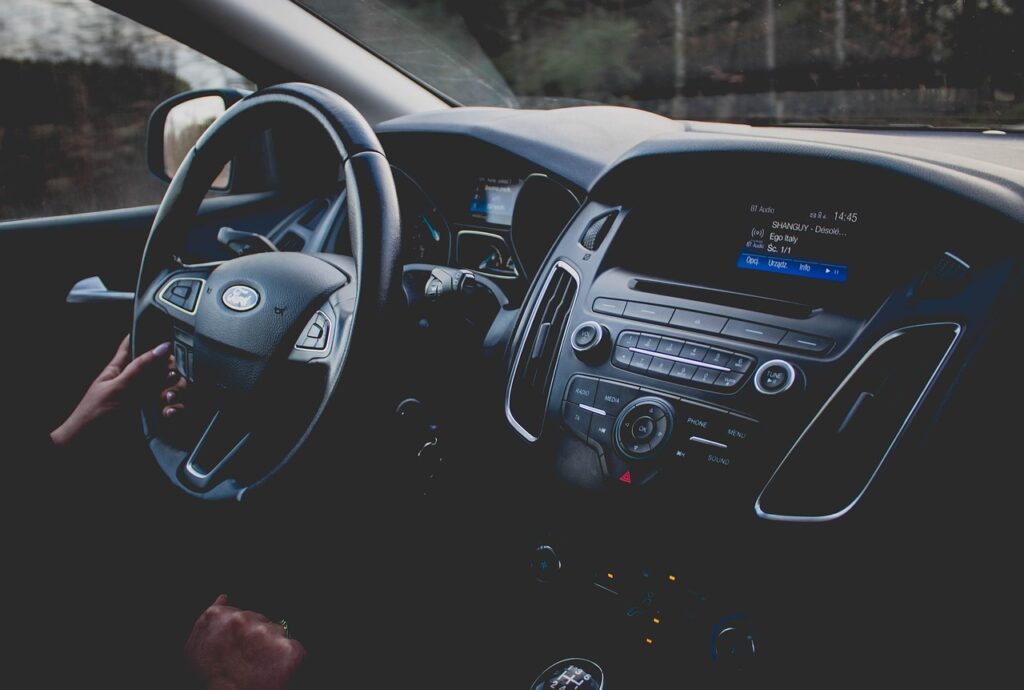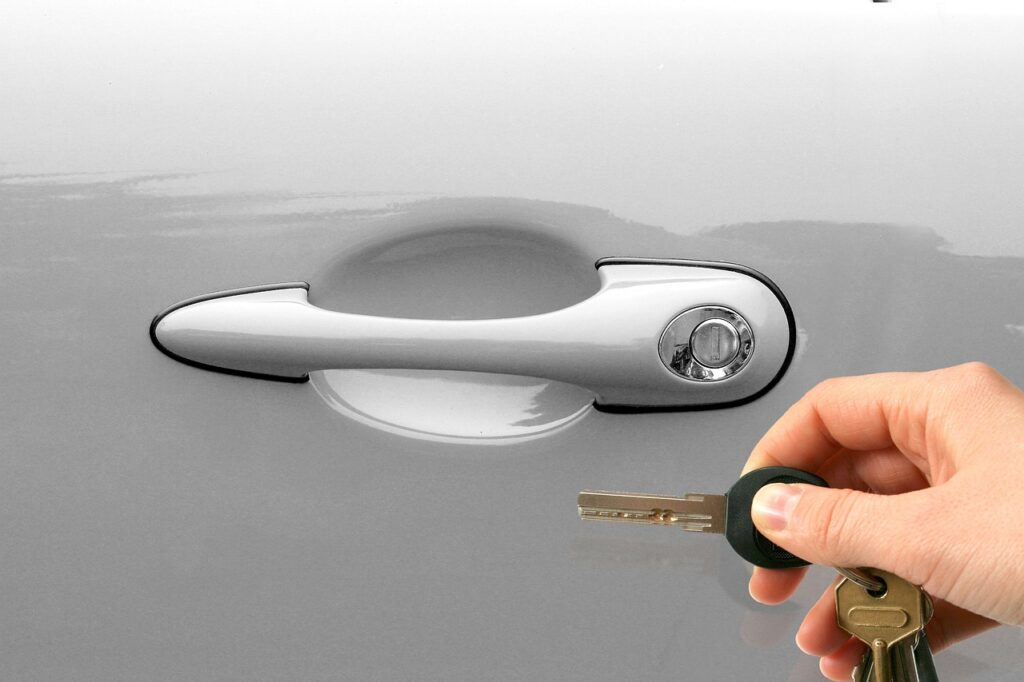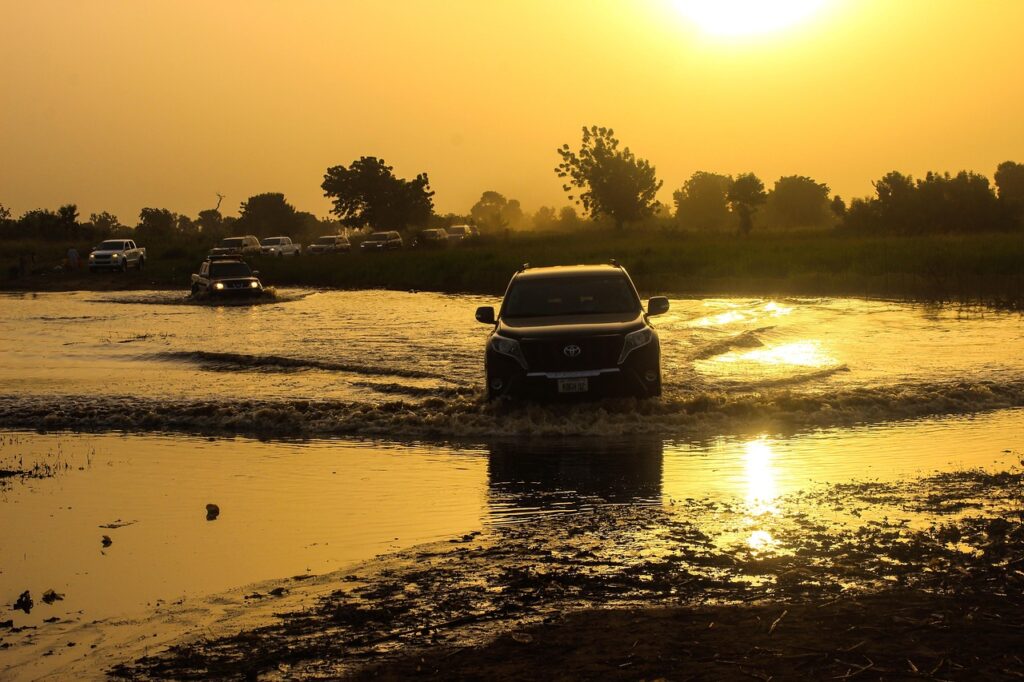The daily commute, once a simple journey from point A to point B, has increasingly become a battleground. You’re driving peacefully when suddenly, a car cuts you off, or a tailgater looms in your rearview mirror. Your heart pounds, frustration surges, and before you know it, you’re gripping the wheel tighter, feeling the urge to react. This scenario, unfortunately, is far too common for drivers across the United States. Road rage is an epidemic with the potential to affect every driver on the road, whether you’re an aggressor or a victim. The consequences are escalating confrontations, reckless driving, serious accidents, and in extreme cases, legal trouble or physical harm. Indeed, a single moment of anger can have lasting repercussions, not just for you but for others on the road.
Understanding the underlying causes of this widespread issue is the first step toward finding solutions. Aggressive driving is a serious concern that endangers lives, encompassing reckless behaviors such as speeding, tailgating, and ignoring traffic rules. These actions can lead to accidents and confrontations. Experts highlight several root causes: the anonymity afforded by being behind the wheel, a perceived lack of law enforcement leading drivers to believe they won’t face penalties, and personal stressors like heavy traffic, long commutes, or emotional distress. Furthermore, poor roadway design, impatience, and even the influence of observing other aggressive drivers can fuel this negative cycle. It’s a complex problem, but one that drivers can learn to navigate safely.
Given that aggressive driving is responsible for a staggering 66% of traffic fatalities, and surveys indicate that 96% of people reported witnessing an act of road rage in the past six months, it’s clear that mastering the art of dealing with aggressive drivers is no longer optional—it’s essential for personal safety and public well-being. This comprehensive guide, informed by driving experts and robust data, outlines twelve critical strategies to help you stay calm, maintain control, and avoid becoming a part of the problem. We’ll empower you with practical, actionable advice, focusing first on proactive measures and early de-escalation techniques that can transform your driving experience.
1. **Practice Polite Driving Habits** One of the most effective ways to avoid road rage, both as a perpetrator and a victim, is to consistently practice polite driving habits. This foundational principle underscores that a considerate driver is less likely to provoke aggression in others and, by extension, less likely to become a target. The concept is simple: by adhering to courteous behaviors, you contribute to a smoother, more predictable traffic flow, which in turn reduces the likelihood of frustrating situations that often trigger aggressive responses.
Polite driving encompasses a range of actions. It means avoiding common aggressive behaviors such as tailgating, which experts define as following too closely, and cutting off other vehicles without sufficient space. It also includes refraining from excessive speeding, weaving erratically through traffic, or leaving high beam headlights on when not appropriate. Erratic braking, where a driver slows down suddenly without clear reason, is another behavior that can quickly escalate tensions on the road.
Moreover, polite driving extends to lane discipline and merging. Drivers should avoid driving in the left lane slower than the rest of the traffic, as this can impede flow and frustrate faster-moving vehicles. When merging, the advice is clear: merge politely and always err on the side of being courteous. This isn’t just about adhering to traffic laws; it’s about fostering an environment where every motorist finds driving easier and more pleasant. By being predictable and respectful, you deny aggressive drivers a reason to target you, making the roads safer for everyone involved.
Think of your driving habits as setting the tone for your interactions on the road. When you act courteously, you are less likely to inadvertently provoke an aggressive driver, thereby reducing your risk of becoming entangled in a dangerous incident. DefensiveDriving.org emphasizes that this approach is smart not just to avoid road rage, but to make driving a more agreeable experience for all. It’s a proactive step that costs nothing but yields significant returns in safety and peace of mind.
Read more about: I Was Born and Raised in Italy: 13 Insider Secrets I Wish Tourists Knew

2. **Maintain Safe Distance and Situational Awareness** A crucial defensive driving technique for managing aggressive drivers, and indeed for overall road safety, is to consistently maintain a safe distance from other vehicles and to cultivate robust situational awareness. This proactive approach allows you ample time to react to unexpected movements, especially those from an aggressive driver, and helps prevent you from being trapped in a dangerous situation. It’s about creating a buffer, both physically and temporally, that gives you control.
A core tenet of this strategy is the “three-second rule,” a widely recommended guideline for following distance. This rule instructs drivers to maintain a gap of at least three seconds between their vehicle and the one in front. To apply it, simply pick a fixed object ahead (like a sign or tree) when the vehicle in front passes it, then count “one-thousand-one, one-thousand-two, one-thousand-three.” If your vehicle reaches that same object before you finish counting, you are following too closely. This ample time for reaction is vital if something unexpected happens, such as sudden braking by the vehicle ahead.
Beyond just following distance, situational awareness demands that you constantly scan your surroundings. This means frequently checking your mirrors—rearview and side—and being acutely aware of the behavior of other drivers around you. Are there vehicles rapidly changing lanes? Is someone tailgating the car in front of them? By observing these cues, you can anticipate potential threats and prepare to react safely. This constant vigilance allows you to spot aggressive behavior early, giving you the opportunity to create distance before a conflict develops.
Experts advise that if you notice a driver exhibiting aggressive behavior, the best course of action is to create distance between you and them. This can involve slowing down and letting them get ahead, or changing lanes so you are not right next to them. Position your vehicle strategically whenever possible, staying in the right lane and avoiding being boxed in by other vehicles. This provides you with an escape route if a tense situation arises. Remember, your goal is to simply let aggressive drivers go around you; typically, they will quickly be on their way, and your safety is preserved.
Read more about: 15 Top Cars for Retirees in 2025: Unbiased Choices for Safety, Value, and Lasting Reliability
3. **Cultivate a Calm and Positive Driving Attitude** The internal state of a driver significantly impacts their susceptibility to road rage and their ability to handle aggressive encounters safely. Cultivating a calm and positive driving attitude is a powerful, often overlooked, strategy. It involves recognizing that driving is not a competition and that your emotional well-being behind the wheel directly influences your safety and the safety of others. Personal stress, emotional distress, work-related pressure, or even just running late can make drivers more prone to aggressive reactions, and consciously managing these factors is paramount.
One critical piece of advice is to avoid driving under distress. If you are angry, upset, or drowsy, your judgment and reaction times can be impaired, making you more vulnerable to engaging in aggressive behavior or reacting poorly to others’ actions. Taking a moment to compose yourself before getting behind the wheel, or even pulling over if emotions become overwhelming during a drive, can prevent dangerous situations. It’s about prioritizing your mental state as much as your physical readiness to drive.
Adjusting your driving attitude also means giving other drivers the benefit of the doubt. Many mistakes on the road are unintentional and not meant as a personal offense. A driver might be distracted, inexperienced, or simply having a bad day. Consumer Reports-style advice leans on objectivity: consider whether responding aggressively is truly worth the potential risk of injury or even death. This rational assessment can often defuse personal frustration before it manifests as aggressive behavior.
Furthermore, having reasonable expectations about your travel time is key. Know when you’ll be driving in traffic, give yourself plenty of time to reach your destination, and avoid setting unreasonable expectations for how fast you’ll get there. Pressure to reach a destination quickly often results in risky maneuvers and heightened frustration. By planning ahead and accepting potential delays, you reduce a major trigger for impatience and aggression. Encouraging a positive driving culture—being courteous, letting others merge, avoiding unnecessary honking, and practicing patience—can also contribute to a less stressful environment for everyone, including yourself.
Read more about: Unlock Your Best Years: 14 Toxic Habits to Ditch After 60 for a Happier, Healthier Life
4. **Avoid Direct Engagement and Retaliation** When faced with an aggressive driver, one of the most vital strategies for personal safety is to absolutely avoid direct engagement or any form of retaliation. The most dangerous road rage incidents often occur when two or more drivers respond aggressively to each other. Your natural instinct might be to react in kind—to honk, gesture, or even yell—but these actions can quickly escalate a tense situation into a dangerous confrontation. Remember, your primary goal is to get home safely, not to “win” a battle on the road or teach another driver a lesson.
Driving experts universally advise against making rude gestures or yelling at other drivers. It’s crucial to understand that you are not the police, and it’s not your job to remind others how to drive, even if they are doing a terrible job. Such actions are highly provocative and can transform a frustrating moment into a personal vendetta. The context notes that even if you’ve been subjected to rude or aggressive driving behaviors, it’s important not to respond in kind. Think twice before laying on your horn or making a rude gesture, as these can easily provoke road rage.
A significant part of avoiding engagement also involves sidestepping eye contact with an aggressive driver who might be trying to pick a fight. Engaging visually can be perceived as a challenge, fueling their aggression. Instead, keep your eyes on the road and focus on your driving, ignoring their aggressive behavior to prevent further conflict. Let the aggressive driver pass and shift your focus entirely to your safety and that of your passengers.
Moreover, resist the urge to make driving a competitive sport. You are not a race car driver; your “win” as a regular driver is simply arriving home safe. Getting worked up over a vehicle that has cut you off or somehow gotten in your way isn’t worth it. The goal is to survive the encounter without becoming a statistic. The context highlights that “getting home safely is more important than teaching another driver a lesson,” a philosophy that should guide all your interactions with aggressive motorists. Do not give aggressive drivers a reason to target you.
Read more about: Alex Jones’s Latest Predictions: Analyzing His Warnings on Trump, the Deep State, and Global Conflict
5. **Use Your Horn Judiciously** The car horn is a vital safety device, but its misuse is a frequent catalyst for road rage and aggressive confrontations. Driving experts strongly advocate for using your horn judiciously, primarily reserving it for emergency situations where it can prevent an accident or alert another driver to immediate danger. It is not intended as an outlet for frustration, a means to express displeasure, or a tool to “remind” other drivers of their perceived errors. Employing it sparingly and appropriately is a key aspect of defensive driving.
When a situation calls for a horn, a light tap is often sufficient to get a driver’s attention without being overly aggressive. For instance, if a driver at a traffic light is distracted and doesn’t notice the light has changed, a gentle, brief tap can serve as a polite reminder. Giving drivers ahead of you a few extra seconds of grace before honking to remind them to move through an intersection is a courteous practice that helps maintain calm. The distinction here is between a quick, informative alert and an extended, frustrated blast.
However, using the horn excessively or blaring it in anger is counterproductive and highly provocative. This type of honking can be perceived as an aggressive challenge, escalating tensions rather than resolving them. An enraged driver might interpret an aggressive horn blast as a direct insult, leading to further confrontation, rude gestures, or even an attempt to pursue your vehicle. Therefore, the advice is clear: only use your horn when necessary to prevent accidents, not as a response to frustration or as a means of expressing anger.
In the context of dealing with aggressive drivers, restraint with your horn is a powerful de-escalation tool. If an aggressive driver is engaging in unsafe behavior, a horn blast from you could inadvertently solidify their aggression towards you. Instead of honking, focus on maintaining a safe distance, changing lanes, or taking other evasive actions. Your horn’s primary role is to warn, not to confront or punish. Recognizing and adhering to this distinction can significantly reduce the risk of a road rage incident spiraling out of control.
Read more about: Tesla Ownership: Avoiding Costly Pitfalls That Could Drain Your Wallet and Your Patience

6. **Apologize When You Make a Mistake** Even the most skilled and cautious drivers make mistakes. When you inadvertently cut off another driver, brake too fast, or make some other error that could be perceived as offensive, a simple apology can be an incredibly effective tool for de-escalation. This small act of acknowledging your error can disarm and calm most drivers, preventing their frustration from escalating into full-blown road rage. It’s a powerful, non-verbal way to take responsibility and demonstrate respect, even in a fleeting interaction on the road.
The method of apology is straightforward: a simple smile and a wave. This gesture communicates regret without requiring verbal interaction or prolonged engagement. It shows the other driver that you recognize your mistake and are not intentionally trying to provoke them. In many cases, this act of humility can diffuse an angry reaction almost immediately. The driver who might have been prepared to honk or gesture angrily will often find their anger dissipates when met with such an unexpected and conciliatory response.
This strategy aligns with the broader principle of encouraging a positive driving culture. By being courteous on the road—letting others merge, avoiding unnecessary honking, and practicing patience—you contribute to an environment where minor errors are more readily forgiven. When you embody this positive culture yourself by apologizing for your own slip-ups, you reinforce the idea that human error is part of driving, and mutual respect can overcome momentary frustrations. It’s a demonstration of emotional intelligence behind the wheel.
Remember, the goal is always to keep the situation from escalating. An apology, delivered promptly and sincerely, can prevent a minor incident from becoming a major confrontation. It’s about taking control of the narrative, albeit briefly, by showing that you are not a combative driver, but rather a considerate one. This approach can save you from unnecessary stress, potential danger, and contribute to a safer, more pleasant driving experience for everyone on the road. It’s a small action with potentially significant positive outcomes in preventing road rage incidents.
Navigating the complexities of modern roadways demands not only proactive prevention but also a robust set of reactive measures to ensure safety when aggressive situations escalate. This section delves into advanced defensive driving techniques, crucial steps to take when confronted by an aggressive driver, the importance of documenting incidents, and understanding the avenues for reporting and legal recourse. Our aim is to equip you with the knowledge to protect yourself, your passengers, and your vehicle when faced with escalating road rage.
Read more about: Ozzy Osbourne, Heavy Metal’s Architect and Reality TV’s Unlikely Patriarch, Dies at 76, Leaving an Indelible Legacy of Sound and Spectacle
7. **Employ Advanced Defensive Driving Techniques**When proactive measures fall short or an aggressive driver initiates a confrontation, a driver’s ability to swiftly and safely react becomes paramount. Advanced defensive driving techniques move beyond basic courtesy and awareness, focusing on anticipatory maneuvers and strategic positioning to actively mitigate danger. These methods are designed to provide you with the control necessary to navigate unpredictable and potentially hazardous situations, prioritizing evasion over engagement. It’s about maintaining a step ahead of the threat, ensuring you can respond effectively to sudden changes.
Smooth braking and evasive actions are critical components. Instead of sudden, abrupt stops that can provoke tailgaters, drivers should aim to slow down gradually, maintaining control and minimizing the risk of inciting further aggression. If an aggressive driver is tailgating or attempting to cut you off, safely changing lanes or taking an alternative route is a more effective strategy than engaging directly. The goal is to create distance and disengage from the escalating conflict, using your vehicle’s capabilities for escape rather than confrontation.
Strategic vehicle positioning also plays a vital role in defensive driving. Whenever possible, it is advisable to stay in the right lane, allowing faster or more aggressive drivers to pass. Moreover, avoid situations where you might be ‘boxed in’ by other vehicles, especially in heavy traffic. By leaving yourself an escape route, you ensure you can exit a tense situation if needed. This foresight transforms your vehicle into a mobile sanctuary, giving you options when others might feel trapped.
Ultimately, the application of advanced defensive driving techniques is about more than just adherence to traffic laws; it is about self-preservation. It empowers you to make split-second decisions that can prevent minor incidents from escalating into dangerous confrontations. These techniques, refined through practice and focused attention, are your best defense against the unpredictable nature of aggressive driving, ensuring you can protect yourself and arrive at your destination safely.

8. **Never Go Home If Being Followed; Adjust Your Route**One of the most terrifying scenarios on the road is realizing that an aggressive driver is actively following your vehicle. In such a critical situation, the absolute rule is: never, under any circumstances, drive directly home. Taking an aggressive driver to your residence jeopardizes not only your immediate safety but also the security of your family and home, as there is no telling whether they will return later. This moment demands a decisive shift in your route and immediate action to ensure your well-being.
The initial step is to confirm you are indeed being followed. While unsettling, it’s important to remain calm and observe the other driver’s behavior over a few turns. Make several unexpected turns or even drive in a loop to see if the aggressive vehicle consistently shadows your movements. This confirmation eliminates doubt and prepares you for the necessary next steps. Panicking can impair judgment, so a measured assessment is key to responding effectively.
If you are certain you are being followed, immediately adjust your route to a safe, public location. Resetting your GPS to the nearest police station is the most recommended course of action. The mere act of heading towards a law enforcement facility often spooks the pursuing driver, causing them to give up. Alternatively, driving to a well-lit, busy public area, such as a convenience store, a gas station, or a hospital, where there are witnesses and potential security cameras, can also provide a safe haven. The presence of other people can deter an aggressor.
Even if the aggressive driver eventually gives up the pursuit, it is wise to lodge a report with local law enforcement. Providing details of the incident, including the vehicle’s description and license plate number if you managed to obtain it, allows authorities to be aware of the individual’s behavior. This documentation can contribute to a safer community and, crucially, establishes a record should the aggressor attempt to target you again. Your safety and peace of mind are paramount, and reporting helps ensure both.
9. **Prioritize Vehicle Security: Stay Inside and Lock Up**In extreme road rage scenarios, an aggressive driver may escalate the situation by exiting their vehicle to confront you. Your vehicle, in this instance, transforms into your most vital shield. The overarching principle is to prioritize your safety by remaining inside your car at all times, keeping all doors locked and windows fully rolled up. Engaging with a physically aggressive individual outside the safety of your vehicle dramatically increases your risk of injury or worse, especially given that some aggressive incidents involve weapons.
Immediate actions are crucial if an aggressor approaches your car. Ensure all doors are locked, even if you thought they were, and roll up every window completely, leaving no cracks. Maintaining this physical barrier prevents any direct contact or forced entry. It is a stark reality that modern car windows are highly resistant to breakage without specific tools, offering significant protection. Avoiding eye contact is also critical; engaging visually can be perceived as a challenge, further fueling their anger and potentially provoking a more aggressive response.
If the aggressor persists in attempting to confront you while you are safely inside your vehicle, drawing attention to the situation is imperative. Activate your car alarm and continuously honk your horn. This creates a disturbance that alerts other motorists and pedestrians to the unfolding conflict, making it less likely for the aggressor to continue their actions. Increased visibility and the presence of witnesses can often deter further escalation and encourage the aggressor to retreat.
Simultaneously with securing your vehicle and drawing attention, immediately call 911. Road rage is a criminal offense, and law enforcement should be involved as soon as possible. Stay on the phone with the dispatcher, providing your location and a description of the aggressive driver and their vehicle. The police are equipped to handle such confrontations, and reporting the incident promptly ensures that professional help is on its way. Your vehicle is your sanctuary; do not leave it, and let the authorities manage the confrontation.
Read more about: Auto Expert’s ‘Hidden’ Warning: 14 Overrated Car Features You Should Never Pay Extra For

10. **Document Incidents with Dashcams or Phones**In the unfortunate event of a road rage incident, having concrete evidence can be invaluable for your protection and for any subsequent legal or reporting actions. Documenting incidents with dashcams or your smartphone provides indisputable proof of what transpired, shifting the narrative from a ‘he said, she said’ situation to one backed by verifiable facts. This evidence becomes critical if you are the victim and need to demonstrate that another driver’s actions caused harm or put you at risk.
Investing in a quality dashcam, capable of recording both front and rear views, is a highly recommended proactive measure for all drivers. Keep it running whenever you are on the road. Dashcam footage serves as an unbiased witness, capturing aggressive driving behaviors, license plate numbers, and the sequence of events leading up to or during a confrontation. This visual record is crucial should the situation escalate to involve authorities or legal proceedings, offering clear proof that you were the victim and acting defensively.
If you do not have a dashcam readily available, your smartphone can serve as an effective, albeit less immediate, alternative. If a situation becomes tense or dangerous, and only when it is safe to do so, use your phone to snap photos or take a video. Focus on capturing the aggressive driver’s vehicle, their license plate number, and any specific aggressive actions. Remember, safety always comes first; never compromise your driving focus or pull out your phone if it puts you at greater risk or distracts you from safely operating your vehicle.
Gathering evidence through documentation is not merely for personal vindication; it plays a vital role in civic responsibility. Police reports and personal injury claims rely heavily on substantiated facts. Dashcam footage or phone recordings can prove critical in claiming compensation for damages or injuries, as well as aiding law enforcement in identifying and prosecuting dangerous drivers. This commitment to documentation helps keep roads safer for everyone by ensuring aggressive behavior has consequences and that victims receive justice.
11. **Report Dangerous Drivers to Authorities**While de-escalation and self-protection are immediate priorities, there are instances where reporting dangerous drivers to authorities becomes a necessary and responsible action. When an aggressive situation escalates beyond your ability to manage, or you witness extreme aggression that poses a threat to public safety, it is imperative to involve law enforcement. This ensures that those who habitually endanger others on the road are held accountable, contributing to a safer driving environment for everyone.
Knowing how and when to report is crucial. For immediate threats or if you are under direct attack by an aggressive driver, call 911 without hesitation. Stay on the phone with the dispatcher, providing clear details of your location, the aggressive vehicle’s make, model, color, and license plate number, and a description of the ongoing threat. Many states also operate dedicated aggressive driver hotlines for non-emergency but serious instances of reckless driving. These hotlines allow you to report incidents that are not immediate emergencies but still warrant police attention.
It is vital to remember that your role is to report, not to intervene or confront. “You’re not the police, and it’s not your job to remind others how to drive,” as emphasized by experts. Your primary responsibility is your safety and that of your passengers. By simply letting authorities know about an aggressive driver’s actions and how they can be found, you are empowering the appropriate professionals to handle the situation. This detachment prevents you from becoming further entangled in a potentially dangerous conflict.
Furthermore, the law recognizes the necessity of emergency communication. If you are in genuine danger from an enraged driver, you are legally entitled to use your phone to call law enforcement, even while driving. While it is always safest to pull off to the shoulder if possible, the immediate threat posed by an aggressive driver can override typical mobile device restrictions. Reporting dangerous drivers is a critical step in addressing the broader epidemic of road rage, transforming individual observations into collective action for road safety.
Read more about: Phoenix Sky Swallowed: An In-Depth Look at the Gigantic Haboob and Its Unfolding Story

12. **Understand Your Legal Rights and Seek Professional Help**Beyond immediate defensive actions and reporting, understanding your legal rights is essential if you suffer losses due to an aggressive driver’s actions. While simply witnessing or being a target of road rage is distressing, legal recourse typically becomes available when actual damages or injuries occur. Knowing these rights empowers you to seek justice and compensation, ensuring that the aggressive driver bears responsibility for their dangerous behavior rather than the victim.
If you sustain property damage to your vehicle or suffer personal injuries as a direct result of an aggressive driving incident, you may have the right to file a personal injury claim. This involves proving negligence—that the road rage driver took actions that directly caused your losses. For example, if an aggressive driver rear-ends you, causing vehicle damage and whiplash, you could claim for medical bills, emotional pain and suffering, lost wages, and property damage. The compensation amount depends entirely on your documented monetary and non-monetary losses.
Gathering evidence is paramount in any legal pursuit. Police reports, eyewitness accounts, and especially dashcam footage or phone recordings of the incident are critical in substantiating your claim. This evidence helps prove the aggressive driver’s culpability and the extent of your losses. Consulting with legal professionals experienced in traffic accidents and personal injury claims is advisable to assess your situation, understand your options, and navigate the complexities of the legal system effectively. They can guide you through the process, from filing a claim to potentially suing the driver.
Furthermore, seeking professional help extends beyond legal counsel to include advanced driving education. Organizations like Click2Drive, a professional driving school, emphasize that “safe driving starts with the right education.” Their expert-led training equips drivers with skills to stay calm and in control, anticipate aggressive behaviors, and manage stress on the road. Such professional instruction focuses on real-world scenarios, building confidence and patience behind the wheel. Investing in these skills is a powerful form of ‘professional help’ that proactively reduces your vulnerability and enhances your ability to handle any driving challenge, turning every journey into a smoother, stress-free experience.
Read more about: Unmasking the Dealership Deception: Your Mechanic’s Guide to Spotting Bad Car Deals and Service Rip-Offs
The increasing prevalence of aggressive driving makes it imperative for every motorist to be prepared, both mentally and practically. By adopting these reactive measures—from advanced defensive maneuvers to understanding your legal protections and embracing continuous driving education—you not only safeguard yourself but also contribute to a larger culture of road safety. Driving is a shared responsibility, and mastering these skills transforms you from a potential victim into a confident, capable, and protected road user.











